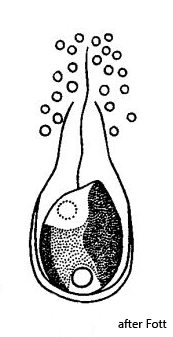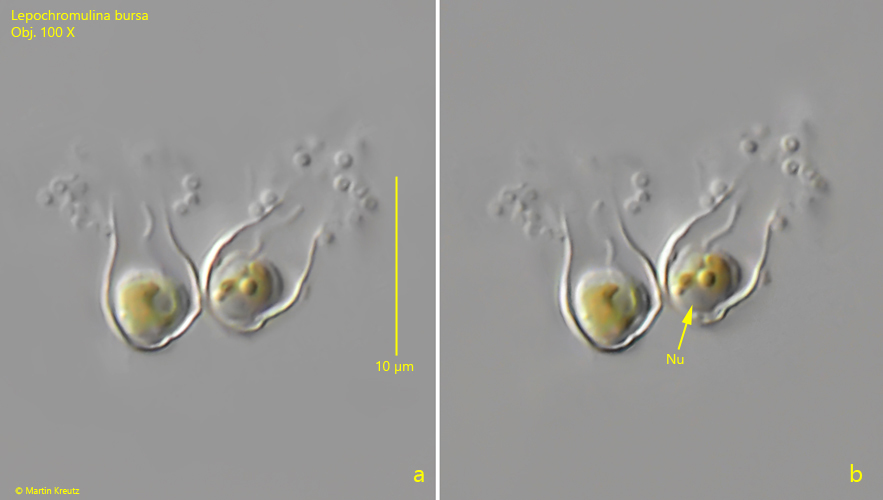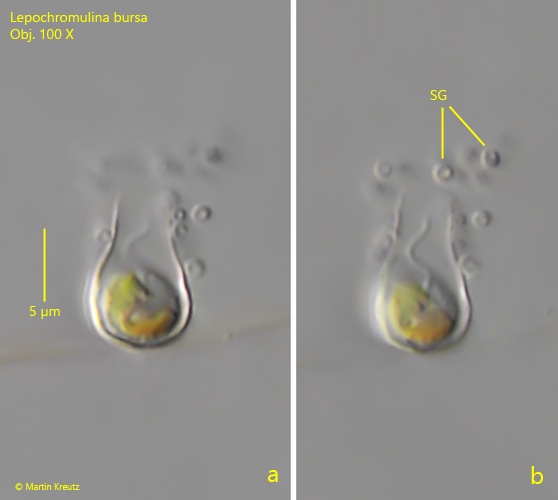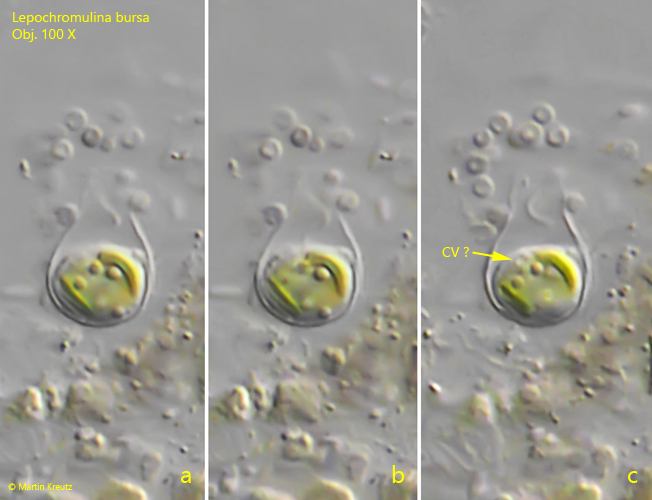Lepochromulina bursa (Scherffel, 1911)
Most likely ID: n.a.
Synonym: n.a.
Sampling location: Simmelried
Phylogenetic tree: Lepochromulina bursa
Diagnosis:
- lorica flask-shaped, with broadly rounded base, stalk absent
- base of lorica often thickened and irregular
- length of lorica about 10 µm
- cell spherical, diameter about 5 µm, attached to bottom of lorica
- one chloroplast
- one flagellum of body length
- one contractile vacuole located apically
- spherical nucleus near posterior end
- aperture of lorica with a distinct cloud of spherical granules

Lepochromulina bursa is a very small Chrysophyceae, which I rarely find in the Simmelried. I usually find the specimens growing on detritus flakes. So far I have not been able to find any specimens on algal filaments.
The cells are at most 5 µm in size, spherical and with one chloroplast. They build an approximately 10 µm long, flask-shaped case, which always has a cloud of spherical granules around its opening. If these granules are absent, then it is the similar species Lepochromulina calyx, which also has a stalk.
It was assumed by Fott (1963) that the grains around the aperture of the lorica were possibly symbiotic bacteria, as they are always present in Lepochromulina bursa. However, it was later shown by Hibbert (1983) that these granules are formed intracellularly and then excreted. Similar bodies are also found in Spongomonas spec. or Rhipidodendron huxleyi. At high magnification I could see that these approximately 1 µm large granules are obviously hollow (s. fig. 2 b). Why they are deposited around the aperture of the lorica opening is not known. Since they are all held in position, there is probably also a gelatinous sheath, but this cannot be seen in the DIC.

Fig. 1 a-b: Lepochromulina bursa. L = 8.6–9.1 µm (of lorica). Slightly different focal planes of two specimens. Note the cloud of spherical granules around the apertures of the loricae. Nu = nucleus. Obj. 100 X.

Fig. 2 a-b: Lepochromulina bursa. L = 9.5 µm (of lorica). Two focal planes of a specimen. The spherical granules (SG) seems to be hollow globules with a diamter of about 1 µm. Nu = nucleus. Obj. 100 X.

Fig. 3 a-c: Lepochromulina bursa. L = 9.2 µm (of lorica). A third specimen attached to a detritus flake. CV ?= probably the contractile vacuole. Obj. 100 X.